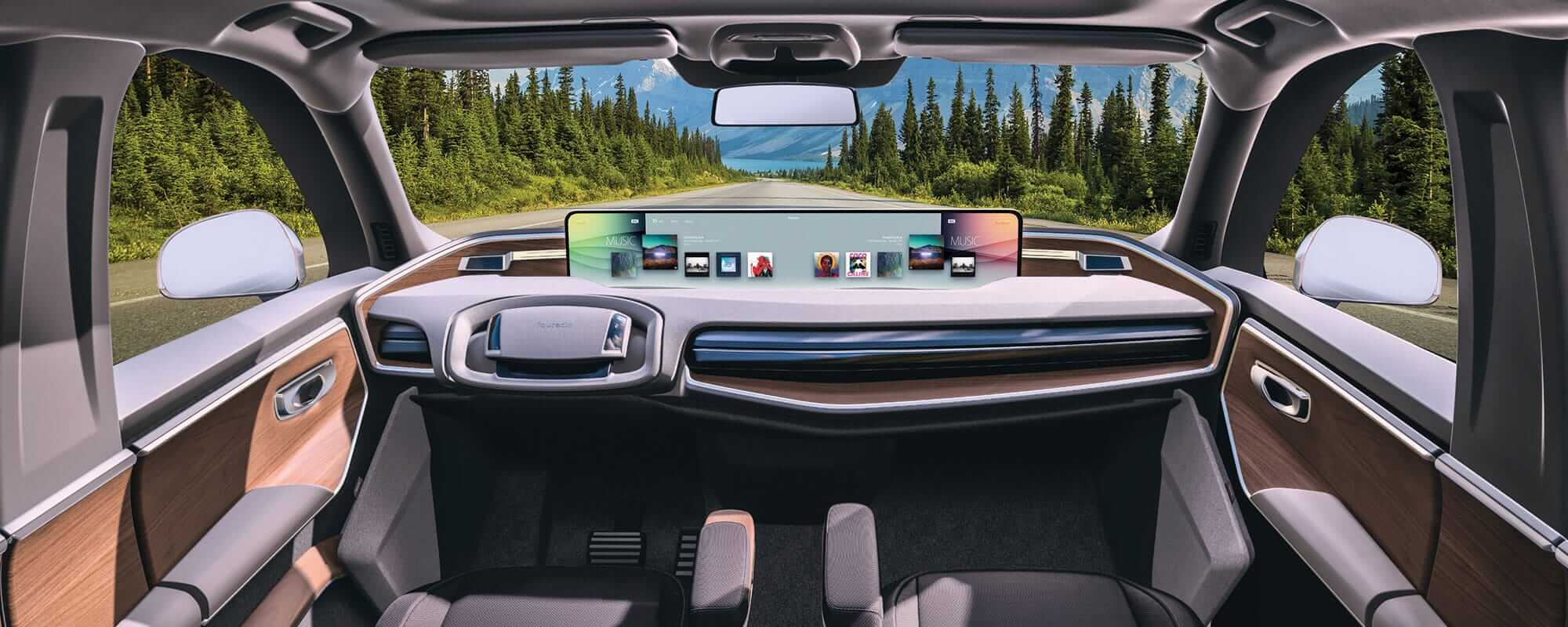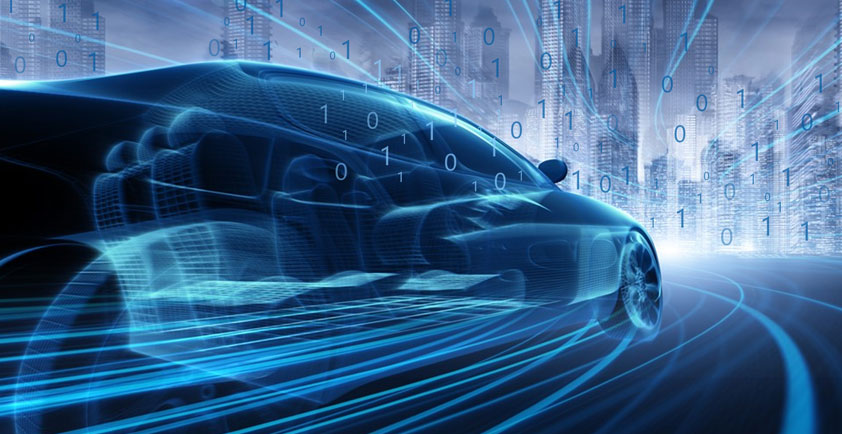

ALONG WITH OUR CUSTOMERS AND PARTNERS, MICROSOFT WILL DRIVE MOBILITY IN THE NEXT DECADE
As we embark upon a new decade, the automotive industry is reaching the most transformative point in its long, pre-digital history. It is predicted that by 2030, there will be a $4 trillion opportunity focused on new mobility services, as the automotive and transportation sectors converge.
Nowhere was the breadth and scale of this opportunity more evident than at CES 2020, held earlier this year in Las Vegas. At this year’s show, two key themes really stood out for me in terms of the transformations that are happening around connected, autonomous, shared and electric (C.A.S.E.) scenarios, and the underlying technologies that are enabling them.
First, the C.A.S.E. technologies that were introduced during the past decade have advanced significantly. And second, over the next 10 years, we will see these capabilities merge.
The C.A.S.E. technologies that were introduced during the past decade have advanced significantly. At CES, we were proud to share in some important announcements with our customers and partners around these advancements, demonstrating how Microsoft technology is helping to accelerate new business models and consumer experiences.
Re-inventing the in-vehicle experience
When it comes to connected vehicles, capabilities such as in-car productivity and entertainment are critical for competitive differentiation. Faurecia, a global leader in automotive technology, is collaborating with Microsoft to develop services that improve comfort, wellness and infotainment, as well as bring digital continuity from the home or office to the car, through access to content on demand or through collaborative working platforms.
A cloud-connected cockpit gives automakers, mobility providers and consumers the ability to upgrade their traveling environment, for example, through enhancing sound, and personalizing entertainment options or in-cabin services. At CES, Faurecia demonstrated how its cockpit integration will enable Microsoft Teams videoconferencing. Using Microsoft Connected Vehicle Platform, Faurecia also showcased its vision of playing games on the go, using Microsoft’s new Project xCloud streaming game preview.
Cerence, a global leader in creating unique, moving experiences for the automotive world, is working with Microsoft to integrate Cerence Drive products with the Microsoft Connected Vehicle Platform (MCVP). This new integration is part of Cerence’s ongoing commitment to delivering a superior user experience in the car through interoperability across voice-powered platforms and operating systems. Automakers developing their connected vehicle solutions on MCVP can now benefit from Cerence’s industry-leading conversational artificial intelligence (AI), in turn delivering a seamless, connected, voice-powered experience to drivers and passengers using their technology.
Speeding up the drive to full autonomy
Mainstream autonomous mobility is coming. IHS Markit, a world leader in critical information, analytics and solutions, cites significant growth in the availability and standardization of advanced driver-assistance systems (ADAS) and automated driving, as people become more comfortable with these technologies.
Microsoft is collaborating with the industry to bring us closer to an autonomous future by accelerating autonomous driving development and testing with the Azure ecosystem. For example, Elektrobit, an award-winning global supplier of embedded and connected software products and services for the automotive industry, accelerates development of ADAS and AD systems with a new, cloud-based, end-to-end solution for software validation.
Available on Azure, the new EB Assist Test Lab provides distributed teams with a single solution to more easily manage petabytes of driving-scene data generated in real and simulated test drives during the validation and verification process, allowing those teams to collaborate and ultimately bring the latest features into production more quickly.
Pioneering the mobility experiences of the future
The next decade will see the creation of standardized platforms for smart mobility services that are built to support commercial solutions, meet consumer demands at global scale and re-invent experiences. Bell’s digital mobility platform, AerOS, will give fleet operators a 360-degree view into their aircraft fleet. By leveraging technologies like AI and IoT, AerOS provides powerful capabilities like fleet master scheduling and real-time aircraft monitoring, enhancing Bell’s Mobility-as-a-Service (MaaS) experience. In building AerOS, Bell chose Microsoft’s Azure cloud as the foundation, and teamed up with Microsoft’s engineers to gain architectural insight, developer support and best practices.
Mobility services will also be a major catalyst for the development of advanced IoT capabilities that make it possible to securely transmit data in complex environments across edge devices such as vehicles, phones, traffic lights or charging stations, and the cloud. We are already seeing the converging of the automotive retail and energy industries, thanks to what is happening with smart charging. Now, the entire energy grid is coming together in a connected way to redefine how we power our cars.
FlashParking, a leader in parking technology, has unveiled their Mobility Hub Operating System, a platform built on Microsoft Azure that is powering the evolution of isolated parking assets into connected mobility hubs that are more efficient, intelligent and adaptable than the garages and surface lots of the past.
Merging advanced technologies to power the future of the automotive industry
The convergence of advanced technologies is playing a key role in enabling the automotive ecosystem and delivering smart mobility services. This is where Microsoft comes in. Along with our extensive global partner network, we support automotive and mobility companies in their evolution to becoming sustainable mobility service providers.
Global technology company ZF Friedrichshafen is transforming into a provider of software-driven mobility solutions, leveraging Azure cloud services and developer tools to promote faster development and validation of connected vehicle functions at a global scale.
LG Electronics is working with Microsoft to build its automotive infotainment systems, building management systems and other business-to-business collaborations. LG will leverage Microsoft Azure cloud and AI services to accelerate the digital transformation of LG’s B2B business growth engines.
Accelerating the connected vehicle opportunity
Many of the value-added services that were on display at CES from our customers and partners are powered by the Microsoft Connected Vehicle Platform (MCVP). It provides underlying capabilities that our partners and OEMs can use to quickly and cost-effectively create their own connected vehicle solutions. These include digital services ranging from assisted and autonomous driving to in-vehicle AI telemetry and advanced navigation.
For example, leveraging Azure Maps, Microsoft has built strong partnerships with TomTom, a leading independent location technology specialist, for traffic-based routing. In addition, we are working with TomTom and Moovit on developing a multi-modal trip planner, and with AccuWeather for weather reports and forecasts to increase awareness of weather events that will occur along a driver’s route.
A growing number of car makers and partners are taking advantage of MCVP, including Volkswagen and Renault-Nissan-Mitsubishi Alliance. At CES, Kal Mos, alliance global VP of connected car service at Renault-Nissan-Mitsubishi, explained the evolution of Nissan’s customer connected services and shared his views for the future.
The Volkswagen Automotive Cloud will be one of the largest dedicated clouds of its kind in the automotive industry and will provide all future digital services and mobility offerings across its entire fleet. More than 5 million new Volkswagen-specific brand vehicles are to be fully connected on Microsoft’s Azure cloud and edge platform each year. The Automotive Cloud subsequently will be rolled out on all Volkswagen Group brands and models.
Volkswagen intends to assemble more than 10,000 digital experts together in its new Car.Software organization, with a group-wide responsibility for software in the vehicle by 2025. The organization will develop cross-brand software in five clusters: Connected Car & Device Platform; Intelligent Body & Cockpit; Automated Driving; Vehicle Motion & Energy; and Digital Business & Mobility Services. The objective is to establish one uniform software architecture across the Volkswagen Group, and bring together parallel development paths in the brands. The clusters will cover the development work on one standard vehicle operating system, “vw.os,” for all Volkswagen Group vehicles and their connection to the Volkswagen Automotive Cloud.
Ericsson is integrating its Connected Vehicle Cloud, which connects more than 4 million vehicles across 180 countries, with Microsoft’s Connected Vehicle Platform to accelerate the delivery of safe, comfortable and personalized connected driving experiences. The integrated solution allows automakers to more quickly and easily deploy and scale global vehicle services such as fleet management, over-the-air software upgrades and connected safety services, while reducing costs.
Luxoft, a digital strategy and software engineering firm, is expanding its collaboration with Microsoft to accelerate the delivery of connected vehicle solutions and mobility experiences. By leveraging MCVP, Luxoft will enable and accelerate the delivery of vehicle-centric solutions and services that will allow automakers to deliver unique features such as advanced vehicle diagnostics, remote access and repair, and preventive maintenance. Collecting real usage data will also support vehicle engineering to improve manufacturing quality.
Building a better tomorrow with quantum computing
Emerging solutions such as quantum computing hold the promise to have enormous impact in areas including supply chain, autonomous driving and mobility scenarios. With Ford, we are exploring how quantum algorithms can help improve urban traffic congestion and develop a more balanced routing system.
Mapping the next decade of mobility
As digital innovations continue to advance, Microsoft is committed to helping the automotive industry take full advantage of technologies like AI, IoT, blockchain and quantum computing to enable new mobility scenarios and immersive experiences. It is clear that the automotive industry is not only embracing the disruption at hand but pioneering exciting ways to drive the next level of mobility.
Author: Sanjay Ravi, General Manager, Automotive Industry













